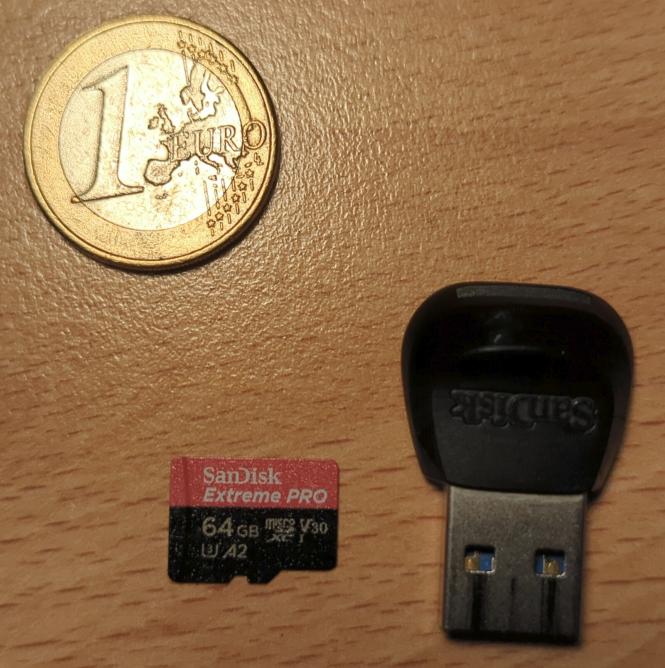
It’s been almost 5 years since I’ve last looked at the speed of removable flash storage media. I use them a lot for transferring very large files among devices, so speed is trump. If size doesn’t matter, the current speed limit for high speed USB flash drives seems to be the speed of the USB port. In case of USB 3.2 Gen 2, that’s somewhere around 1 GByte/s. If there is limited space in the pocket or backpack, MicroSD cards and a good USB adapter are an interesting alternative. Despite speeds being much slower, read/write performance varies significantly between cheap and somewhat more expensive cards. So let’s have a look where the bar is at the end of 2023.
Back in 2019, the fastest MicroSD card I could get hold of delivered 92 MB/s when reading large files, and I could write such files at a sustained speed of 62 MB/s. That’s of course far less than USB flash memory sticks these days but it’s a tradeoff between size and speed. Fun fact: 32 GB MicroSD cards I used back then are hard to get these days, the lower limit seems to be 64 GB now. For many of my use cases, that’s complete overkill.
But prices have fallen significantly, so I guess that selling 32 GB cards makes no sense anymore. 64 GB entry level cards start at €6, while a Sandisk Extreme MicroSD card of this capacity costs around €10 these days. That’s the line of MicroSD cards I used 5 years ago for that 92/62 MB/s result. In the meantime, or perhaps even then, I’m not quite sure anymore, Sandisk has one higher class, the Sandisk Extreme Pro, for which they promise read speeds of up to 200 MB/s and write speeds of up to 90 MB/s with a USB 3 to MicroSD card adapter that supports the Sandisk proprietary UHS-I extensions. These cards are currently sold for around €11.50, i.e. just a tiny bit more than the Exteme’s, and twice the price of entry level cards. As ‘up to’ values are always a bit vague, I of course wondered how fast those cards are with my Lenovo X13 Linux notebook and a USB 3.2 Gen 2 port!?
It turned out that Sandisk pretty much keeps what they promise. When reading a 16 GB file with random data, I got sustained read speeds of 167 MB/s, which is pretty much the limit of the Sandisk extended UHS-I protocol. That’s almost twice as fast as back in 2019! When writing the same amount of random data to the MicroSD card, I could achieve a sustainable data rate of 90 MB/s, i.e. the promised value. That’s 50% faster, or 30 MB/s more than what I measured back in 2019. Very impressive for a card the with a size of a few square millimeters and a weight of 2 grams! For details how I measured and a comparison to other MicroSD cards, have a look at my previous article on the topic.
Outlook
So where could we go from here in the coming years? From a performance point of view, the current data rates are the maximum that can be reached over UHS-I with proprietary Sandisk extensions. And it seems that that’s it for UHS-I. UHS-II and III have been specified already a few years ago, as well as MicroSD Express. The later one pipes a PCI-Express lane and NVMe into the MicroSD card for GB/s speeds. But despite standardized already some time ago, I could only find one UHS-II capable MicroSD card on the net and nothing that would support MicroSD Express. So I guess we will have to wait a bit before we see a further significant read/write performance improvement for those small MicroSD cards.